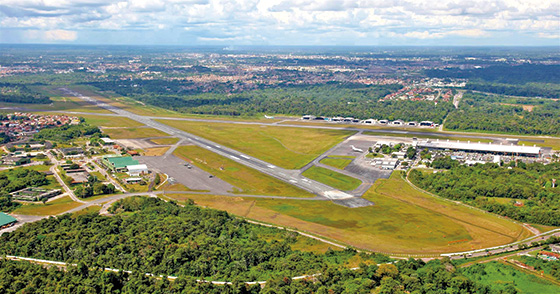Regional airports increasing slowly

Due to the reduction of public investments, the area is a field of opportunities for private initiative
Regional air transport already corresponds to 8.8 percent of the yearly traffic in the country. In 2015, it was responsible by moving approximately 19 million passengers, an increase of 2.4 percent in relation to the previous year, according to a study carried out by theDepartamento de Planejamento e Estudos (DPE – Department of Planning and Studies) of the Secretary of Civil Aviation,subordinated to the President and with status of ministry. With this result, regional aviation had an increase of 0.2 percent in the total motion of passengers in Brazilian airports during 2015. Regional aviation represents currently 8.8 percent of the yearly flow of passengers in the country. Figures of terminals located in state capitals remained stable, with no variation related to 2014.
Among the regional airports that move more than 300,000 passengers per year, Altamira (PA) registered the highest increase: 35.9 percent more than 2014. This result has a motive: the construction works of Belo Monte hydroelectric plant. The terminals ofNavegantes (SC), RibeirãoPreto (SP) andFoz do Iguaçu (PR) were increased respectively in 9.8, 9.6 and 9.5 percent, andIlhéus (BA) got the fifth place with an increase of 8.6 percent. Foz do Iguaçu got the best absolute result among regional airports: 2 million passengers along 2015. Altamira had the highest increase in the volume of passengers in regional airports during 2015 andNavegantes (SC) hadthe highest increase in aircraft traffic, 6.4 percent above the figures of 2014.
These airports, however, need more investments but are losing the fight for the low resources of the government. Estimated in R$ 7.3 billion, the Program of Regional Aviation—designed to improve the area—involving 270 regional airports had no fuel to come out of the paper. The investment comes from theFundo Nacional da Aviação Civil (FNAC – National Fund for Civil Aviation), composed by taxes and bestowals of the industry that may be invested only in the area. But the resources were subjected to contingency. Till this moment, only a little more than R$ 400 million were spent in minor works and equipment. With delay in the works to develop airports outside of the capitals, the federal government tries to accelerate the processes of their concession to the private industry. Six airports located in cities of the states of Bahia, Minas GeraisandGoiás will probably have theirmunicipalities and state governmentsauthorized to pass them to private initiative. Eleven other airports were already authorized.
There are currently 120 units attended by regular flights. According to data coming from the Secretary of Civil Aviation, people who use these units have 3500 cities as their origin/destination. The government was negotiating each work with each city.Currently, there are 75 airports with environmental licenses liberated or requested. In other words, ready to start construction works with resources coming from the National Fund of Civil Aviation, which receives money from the concession of large airports.

Av. Francisco Matarazzo, 404 Cj. 701/703 Água Branca - CEP 05001-000 São Paulo/SP
Telefone (11) 3662-4159
© Sobratema. A reprodução do conteúdo total ou parcial é autorizada, desde que citada a fonte. Política de privacidade













